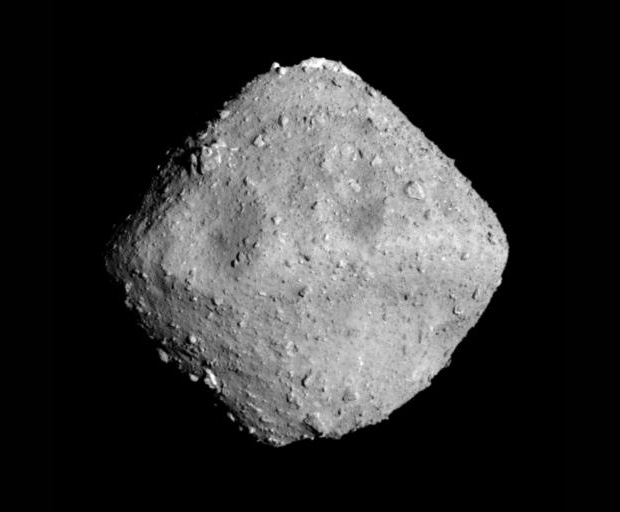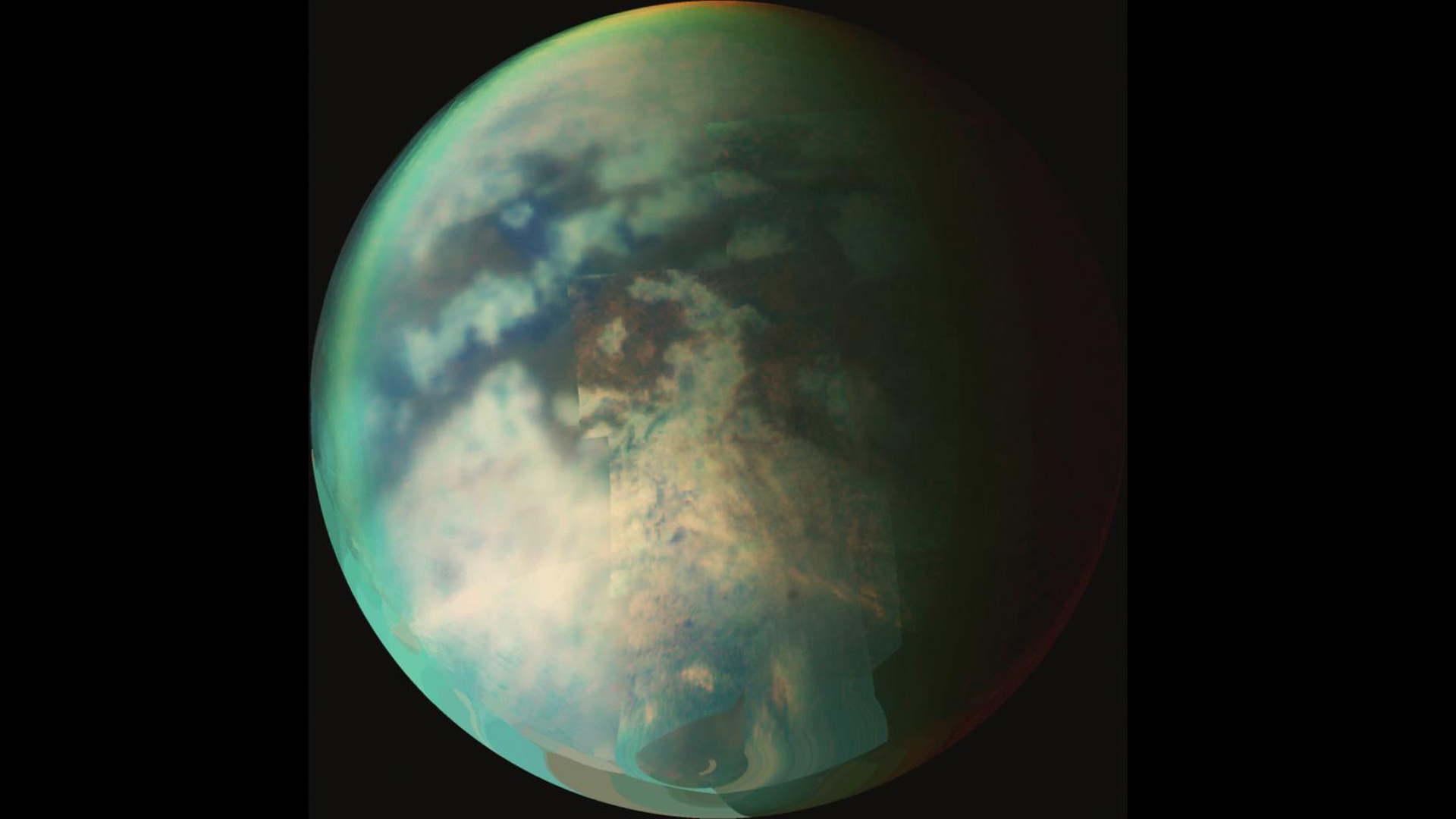Japan's Hayabusa2 Probe to Snag 1st Asteroid Sample Next Month
A Japanese spacecraft will aim to snag the first samples of its target asteroid next month.
The Hayabusa2 probe, which has been studying the diamond-shaped asteroid Ryugu up close since late June, will swoop down to the 3,000-foot-wide (900 meters) space rock's surface for the first time during the week of Feb. 18, mission team members announced via Twitter Wednesday (Jan. 9).
This will be the first of three sampling sorties for Hayabusa2. One of the future efforts will grab material from a fresh crater, which the mission will excavate using a "kinetic impactor" released by the spacecraft. [Japan's Hayabusa2 Asteroid Mission in Pictures]
If all goes according to plan, the collected Ryugu rubble will come down to Earth in December 2020. Scientists around the world will then scrutinize the material, hunting for clues about the evolution of the solar system and the role that carbon-rich asteroids such as Ryugu may have played in helping life get a foothold on Earth.
The February event won't mark the first Ryugu touchdown for the Hayabusa2 mission. In late September, the mothership deployed two tiny, hopping rovers named OWL and HIBOU onto the asteroid's surface. Then, less than two weeks later, a German-built lander called MASCOT followed this duo onto the space rock.
The microwave-size MASCOT gathered data for 17 hours before its battery died, slightly exceeding its planned mission lifetime. The solar-powered OWL and HIBOU are still exploring.
Also Wednesday, Hayabusa2 team members announced that features on Ryugu's surface are being named after characters in children's stories. This makes sense, given the asteroid's moniker. In Japanese folklore, Ryugu is an undersea palace that's visited by a fisherman named Urashima Tarō. The man returns from his voyage with a box, which explains why mission team members chose this name for their sample-return mission.
Breaking space news, the latest updates on rocket launches, skywatching events and more!
And the Hayabusa2 team has given the mythic fisherman his due: One of the newly named features on the asteroid is Urashima Crater.
NASA also has an asteroid-sampling craft operating at a carbon-rich space rock right now. The OSIRIS-REx probe began orbiting the 1,650-foot-wide (500 m) asteroid Bennu on Dec. 31 and is expected to grab samples in mid-2020. This material will come to Earth in September 2023.
Mike Wall's book about the search for alien life, "Out There" (Grand Central Publishing, 2018; illustrated by Karl Tate), is out now. Follow him on Twitter @michaeldwall. Follow us @Spacedotcom or Facebook. Originally published on Space.com .

Michael Wall is a Senior Space Writer with Space.com and joined the team in 2010. He primarily covers exoplanets, spaceflight and military space, but has been known to dabble in the space art beat. His book about the search for alien life, "Out There," was published on Nov. 13, 2018. Before becoming a science writer, Michael worked as a herpetologist and wildlife biologist. He has a Ph.D. in evolutionary biology from the University of Sydney, Australia, a bachelor's degree from the University of Arizona, and a graduate certificate in science writing from the University of California, Santa Cruz. To find out what his latest project is, you can follow Michael on Twitter.

